Turn any photo into a dot grid artwork with these Photoshop actions. You'll get great results with dots that change size. They get larger in brighter areas and smaller in darker areas. Free download available.
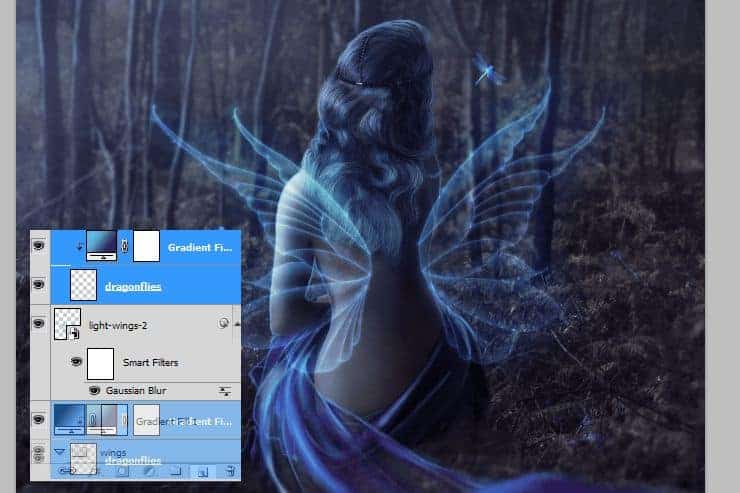
Step 56
Change blending mode of duplicated layer with dragonflies (not gradient!) to Linear Dodge (Add).
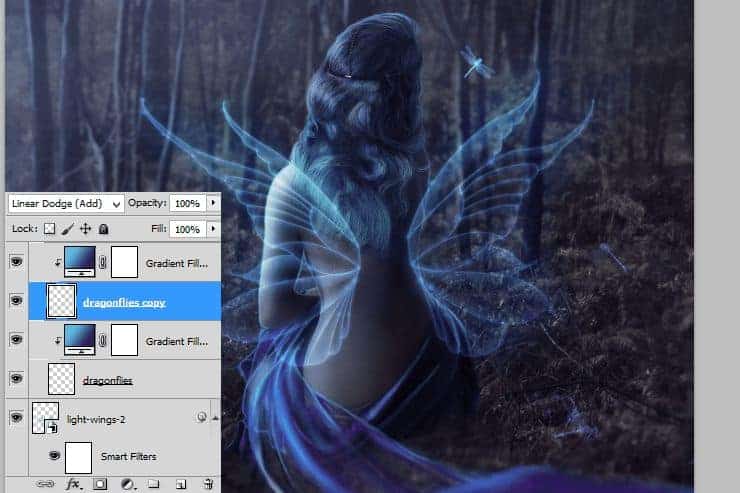
Step 57
Add new layer. With soft, big brush draw dots on darker dragonflies. I used #352c5f color.
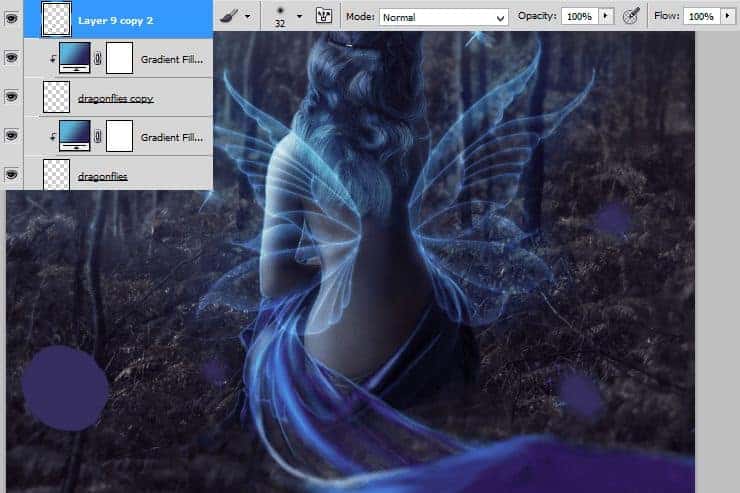
Step 58
Now change blending mode of this layer to Color Dodge.
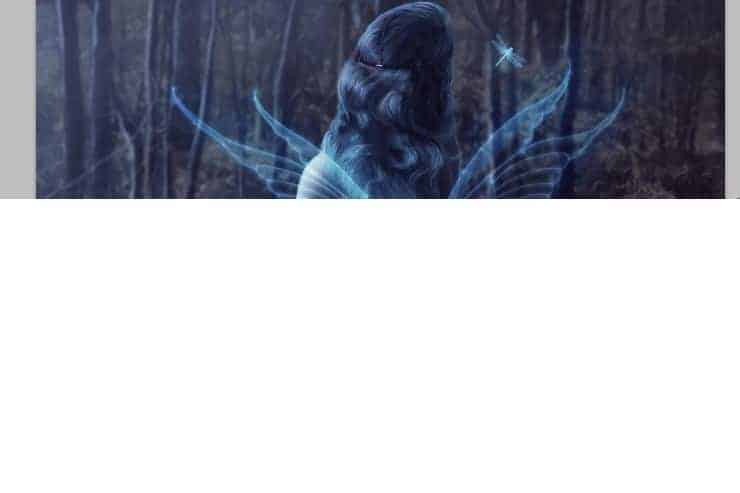
Step 59
Duplicate this layer.
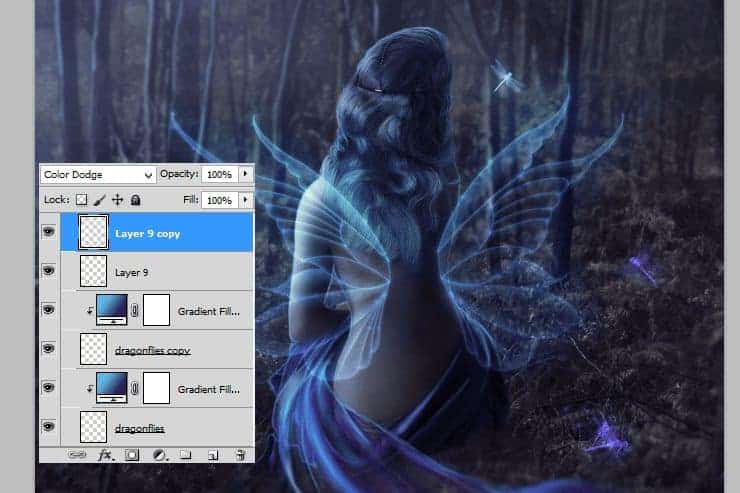
Step 60
Add new folder. By holding ctrl, drag and drop layers to this folder.
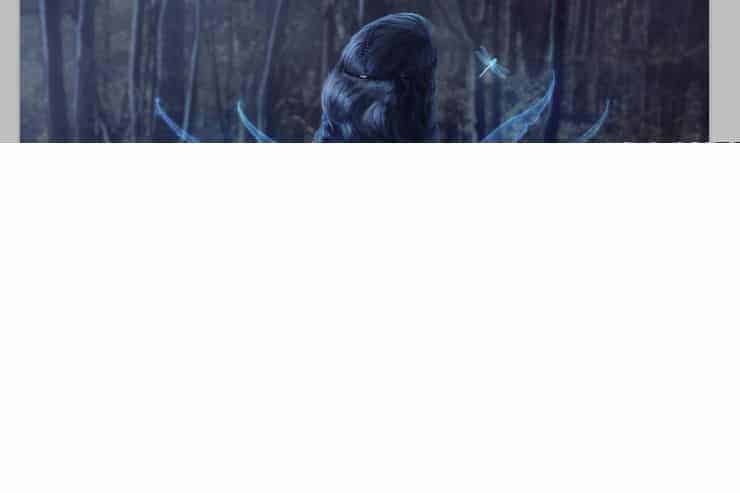
Step 61
Duplicate whole folder. Decrease opacity to 71%.
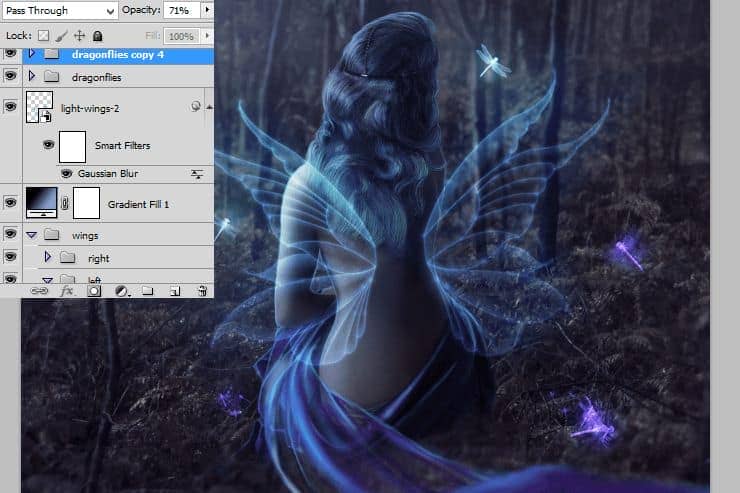
Step 62
Again duplicate first folder with dragonflies. Transform it as shown. Of course you can play with it! :)
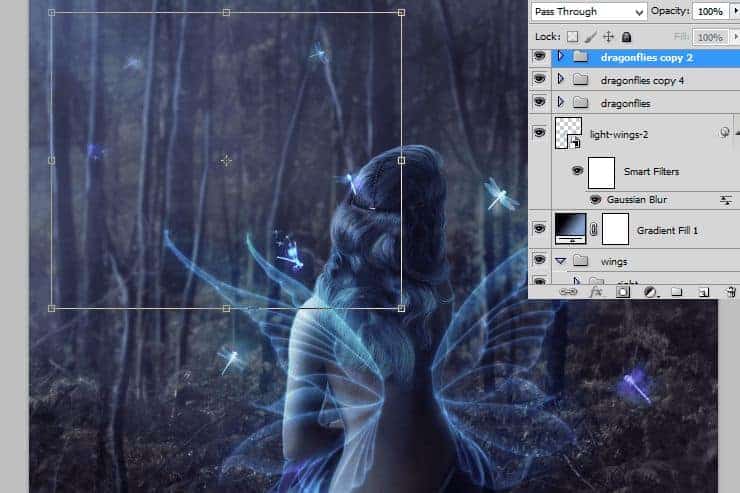
Step 63
Repeat this step.
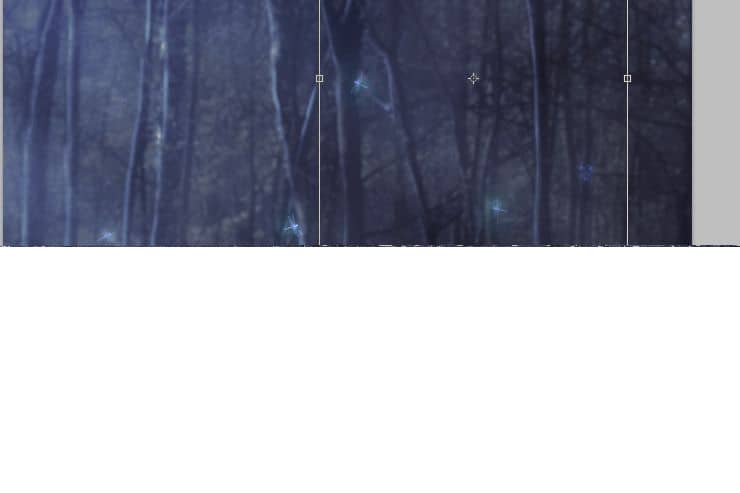
Step 64
Back below wings layers. Add new layer and with gently dots draw lights below wings with blue (#6cc9d9), small, brush.
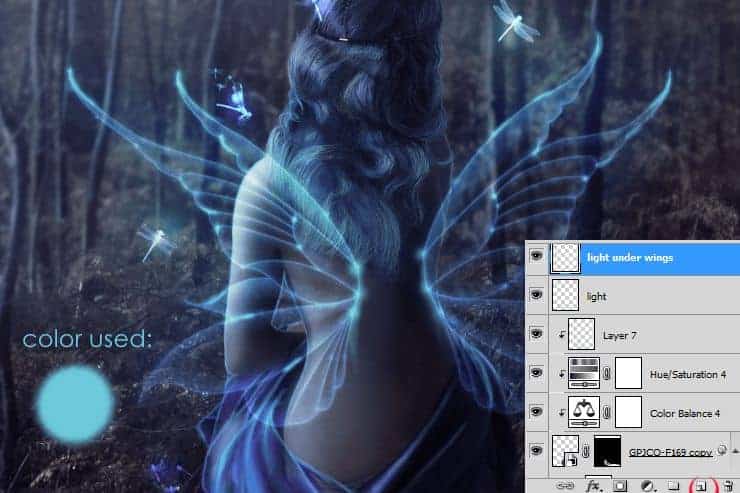
Step 65
On new layer pick smaller brush. Draw lights on back of model and on branches.
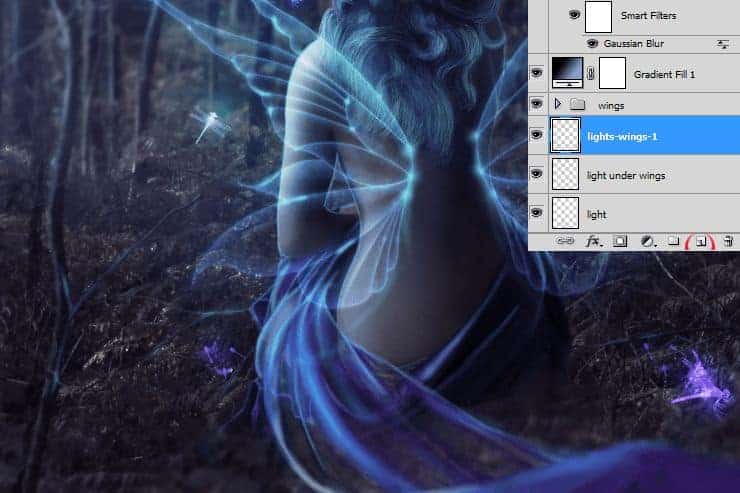
Step 66
Back to top of the layers. Use #231549 color for drawing base of drappery. Choose #4e6b99 color and smaller, lighter brush to make lights. Don't be afraid. It's only shapes and simple strokes! :).
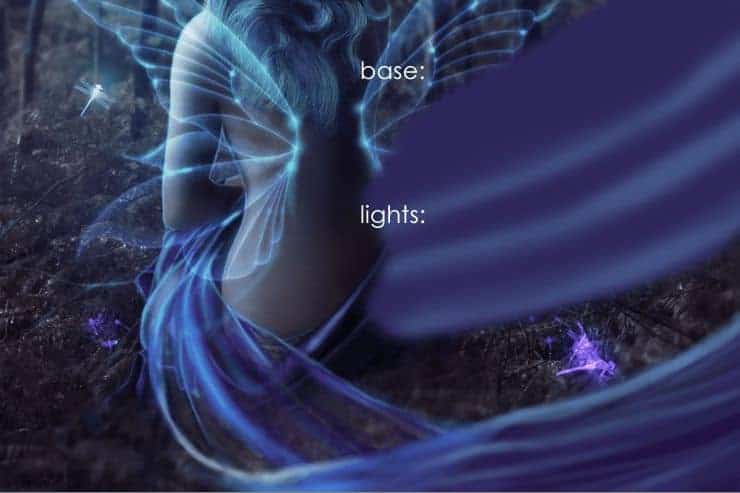
Step 67
I decreased opacity of this layer to 55% - drappery is semi transparent.
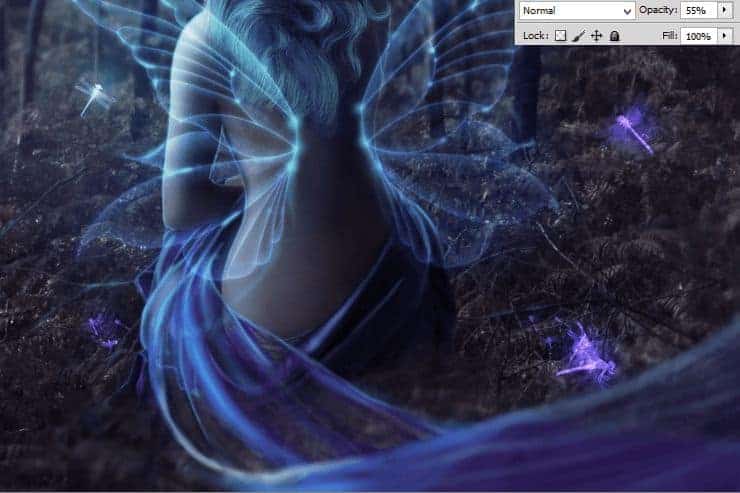
Step 68
Duplicate drawn layer. Then choose from top menu Filter > Blur > Gaussian blur.
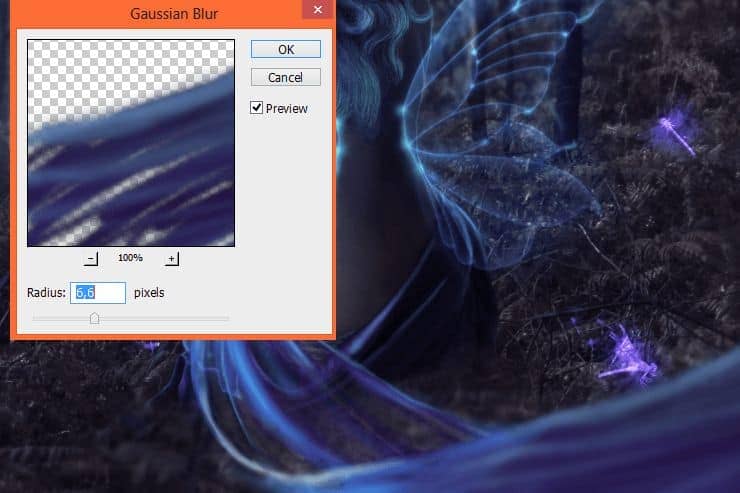
Step 69
Decrease opacity of duplicated layer to 70%.
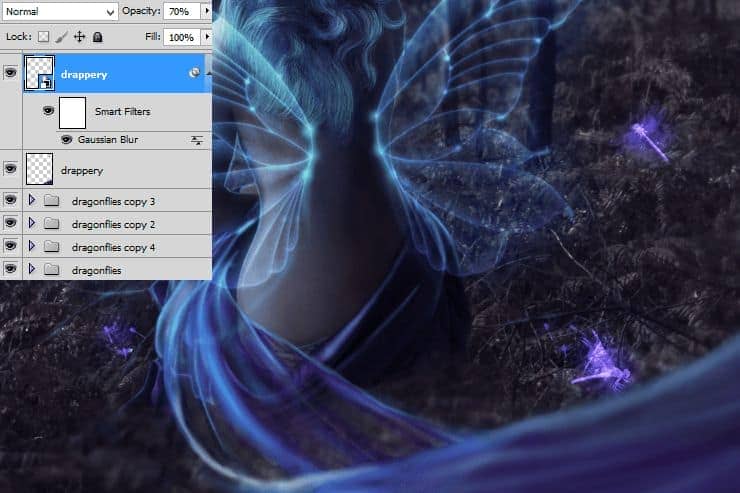
Step 70
Optional: Place "Burst of light" to your image. Mask it as is shown.
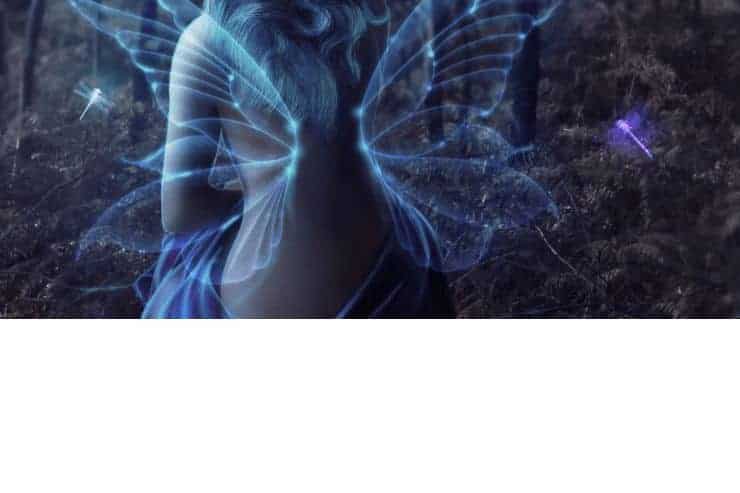
From top menu choose Filter > Blur > Gaussian Blur - drop will be on first, blurred plan.
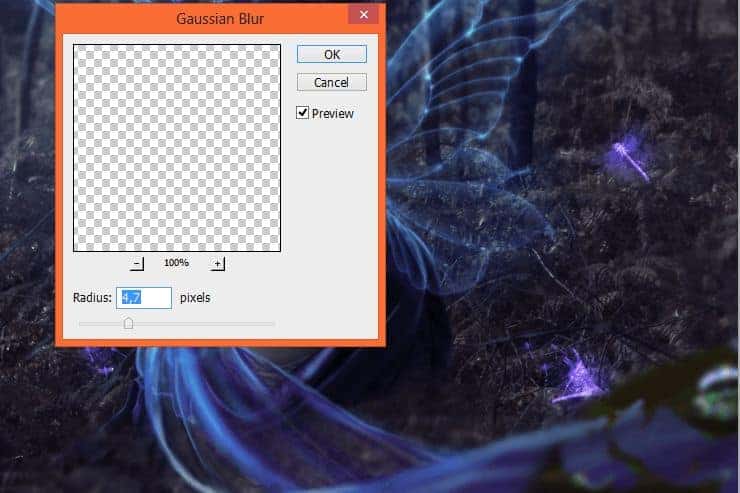
Change Blending mode of created layer to Color Dodge.
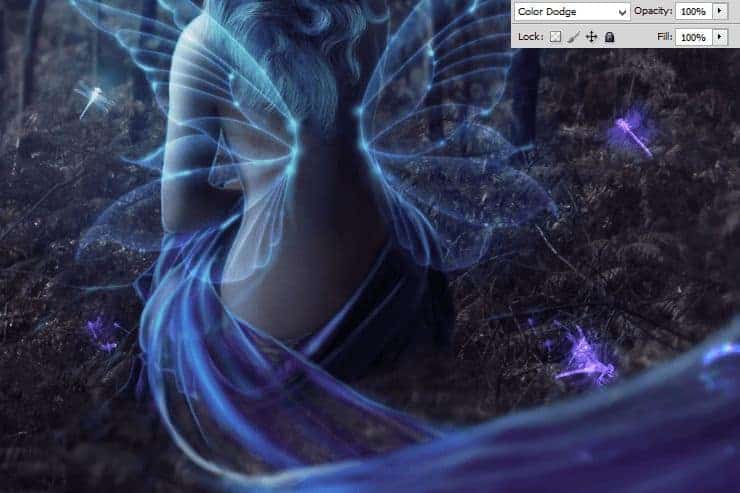
Add Brightness/Contrast adjustment layer. Then make it clippy, by RMB > Create clipping mask.
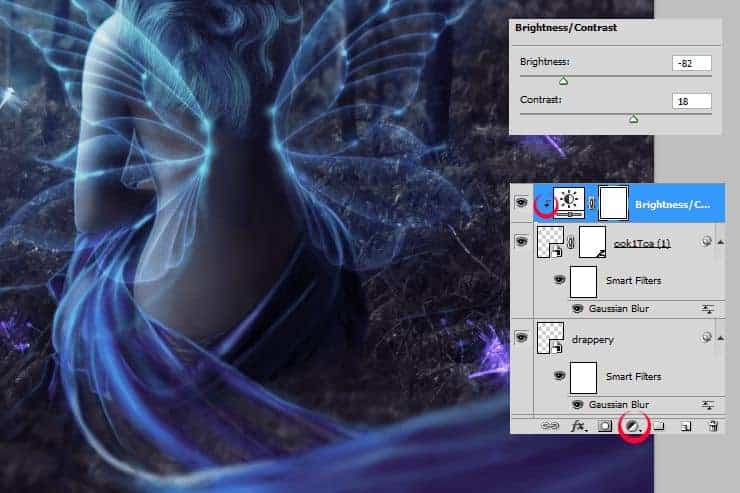
Next, add clipping layer with Hue/Saturation.
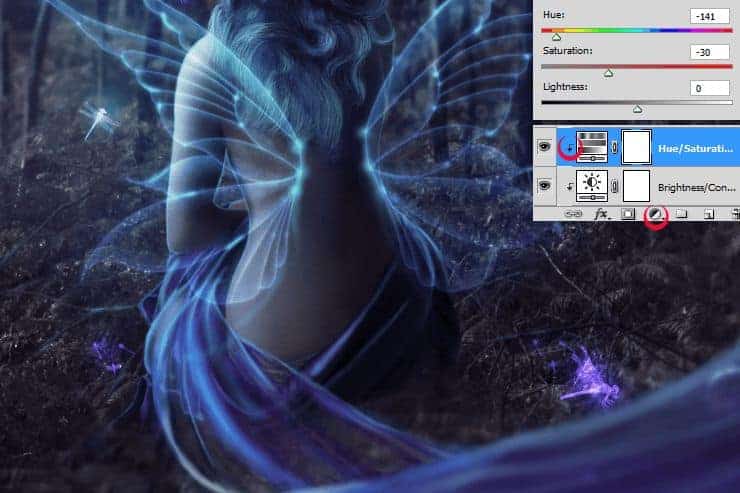
At the end, add Color/Balance layer - make it clippy.
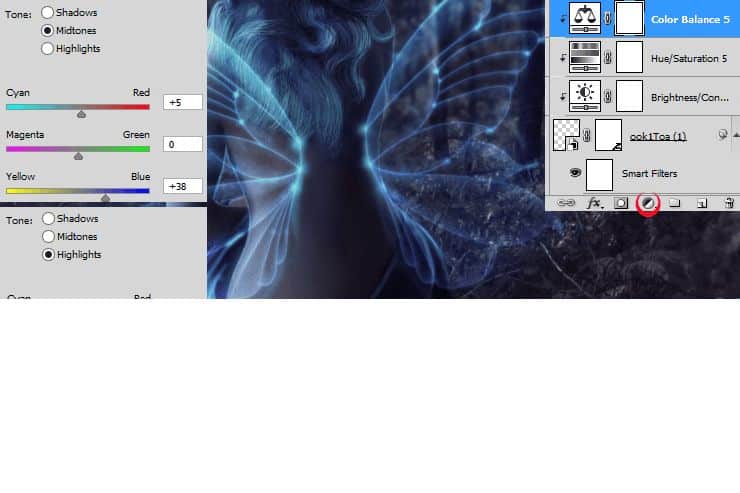
Step 71
Place Dead tree stock in left-bottom corner into your file. Then from top menu pick Filter > Blur > Gaussian blur...
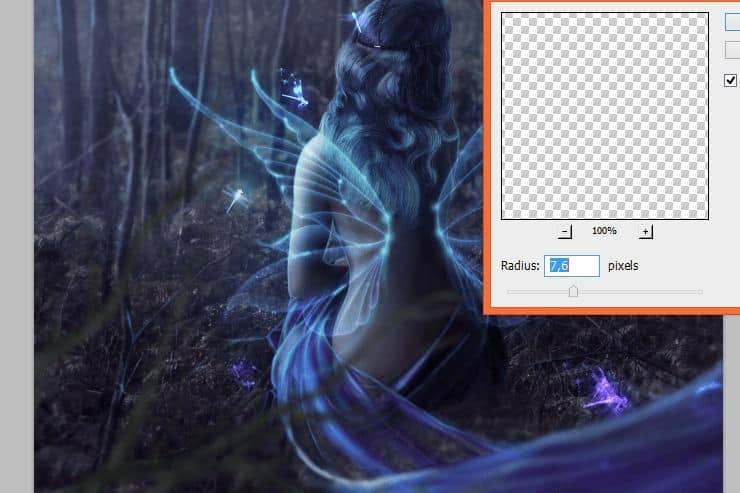
Step 72
Add adjustments layer with Brightness/Contrast. Set it as is shown. Then make it clippy (RMB > Create clipping mask).
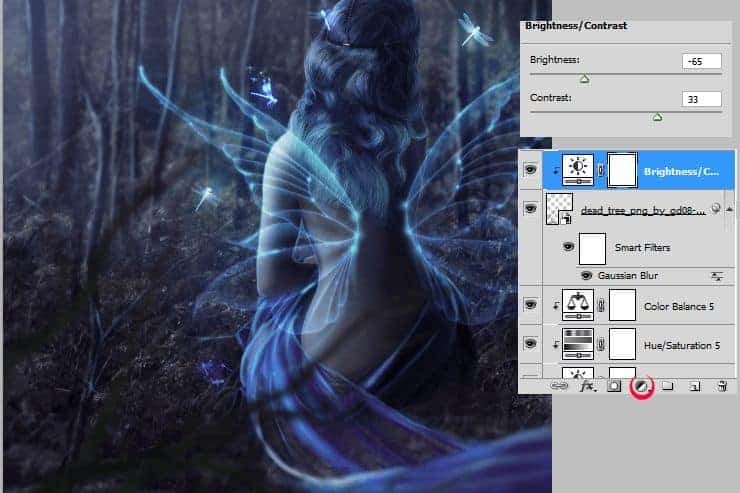
Step 73
Next, add clipping adjustment layer with Color/Balance. Decrease opacity of this layer to 50%.
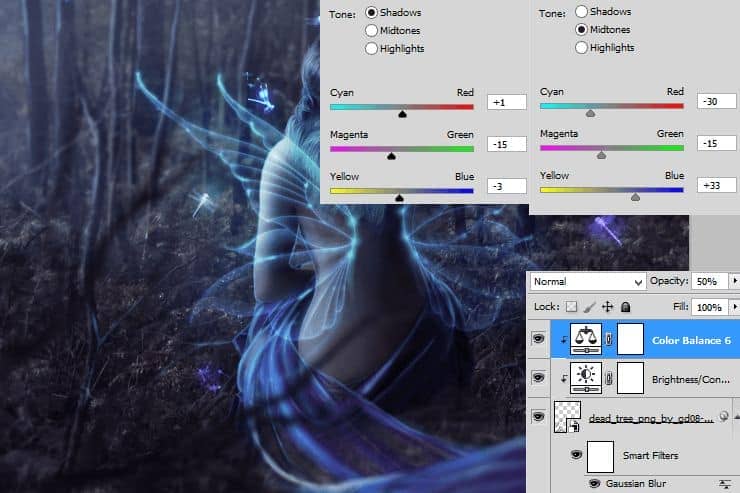
Step 74
Add New clipping layer. Pick soft brush and draw lights on branches. Don't be afraid, your strokes don't have to be precise. Decrease opacity of this layer to 50%.
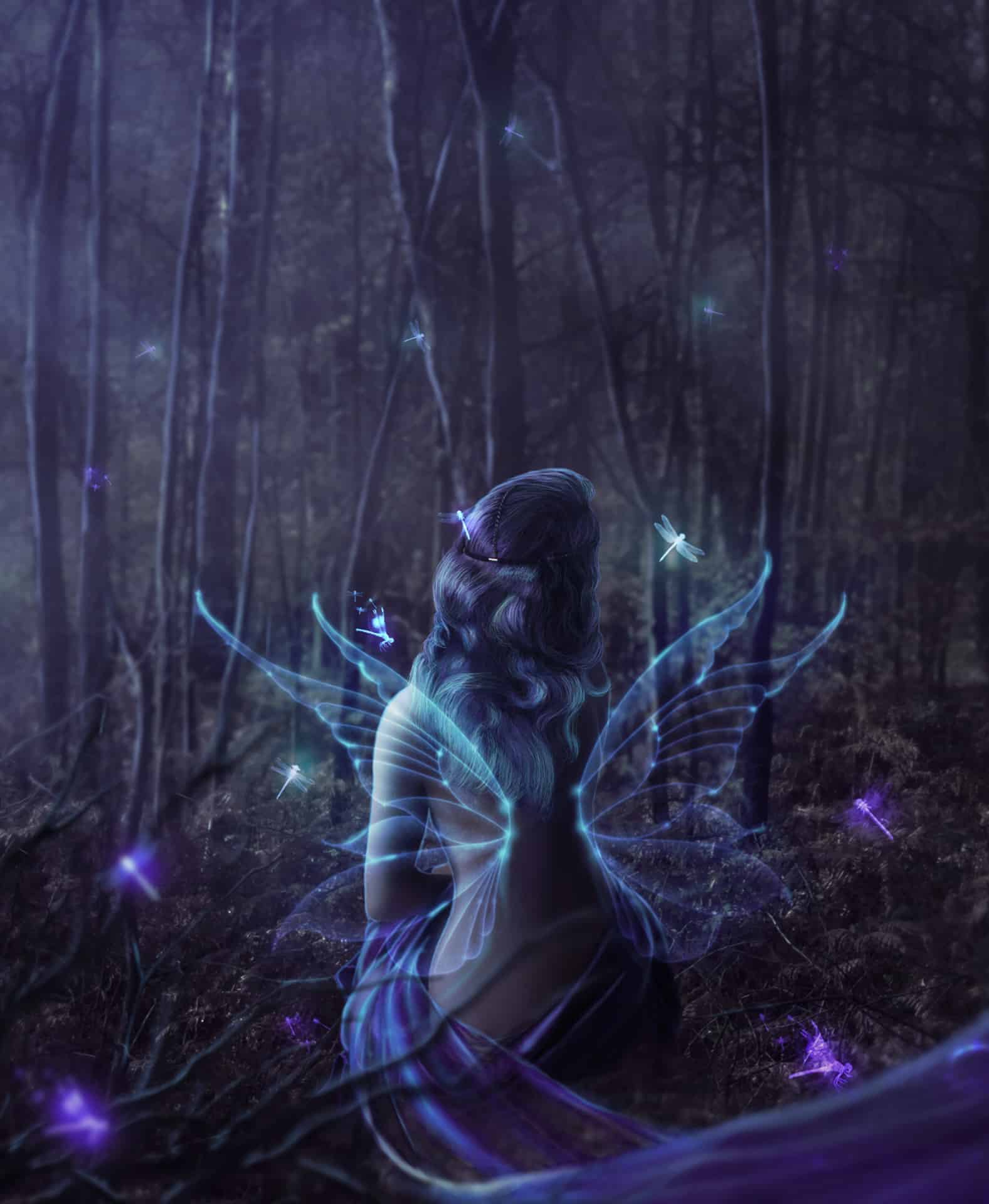
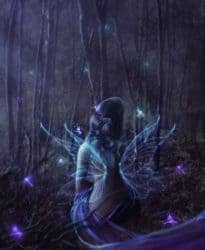
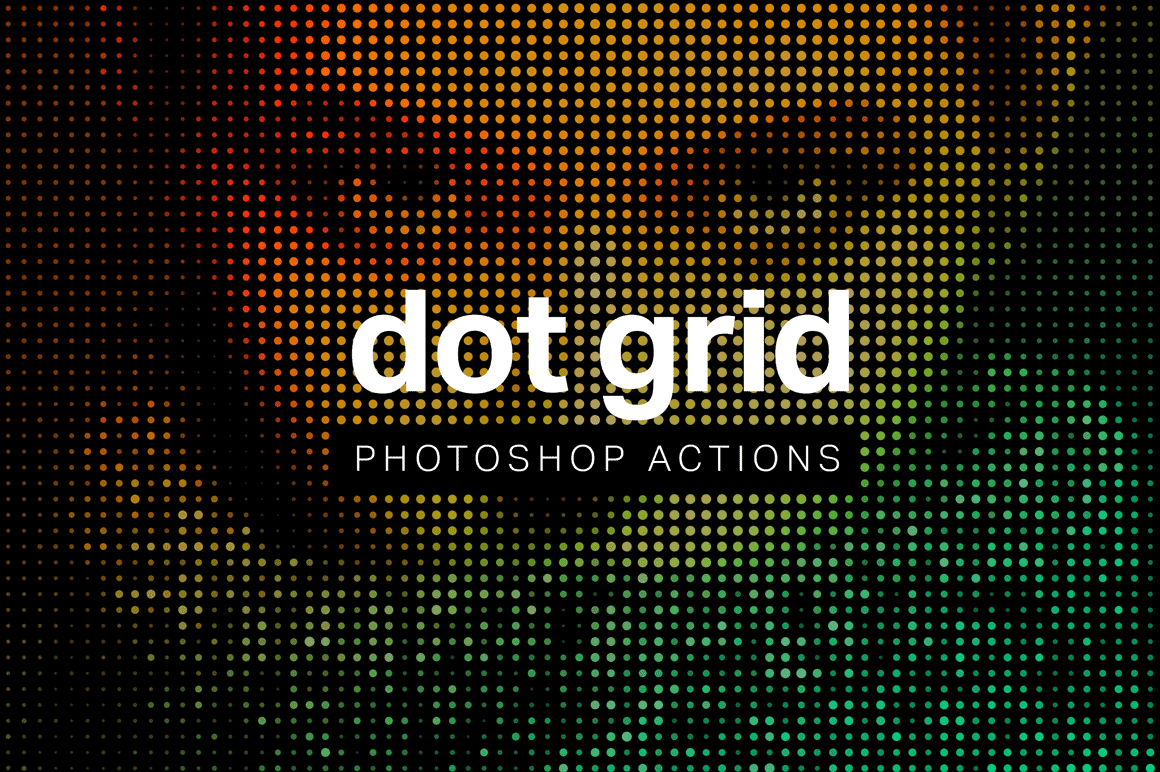
18 comments on “Playing with Glows and Blurs - Fairy in the Woods Photoshop Tutorial”
nice article
This article is awesome. I've problem to do Photoshop specially to do the contrast portion. But in this post the description is given step by step, which helped me a lot. But did you notice one thing? The shadow of the model is missing on the grass. Step-16 seems difficult to me when I was doing that. But you did a great job. Thank you so much.
thanks for the effort
how did you get the colors in step 21. i used the color the color specified and color dynamic. I've tried countless time to at least come close to what you have but to no avail.
Amazing.. thanks for the awesome post. Do you help with photoshop servides as well?
Amazing.. thanks for the awesome post.
May I know which photoshop version u use for these effects stuff??
MsRiotte, THANKS.Bardzo podobały mi lekcji I really liked your lesson.Your lesson is very different from other classes of masters . I would like to do more of your lessons. This is your only lesson ?
amazing!! great to see the amazing work of great experienced art directors!!
I come from china.
Witaj Monika.
Świetny tutorial. Dopiero zaczynam przygodę z Photoshopem dlatego pojawiły się u mnie problemy z krokiem 34, 35.
34.1: Którą firanę z LAV Flutter Pack dokładnie wybrałaś?
34.2: Jak zrobiłaś to że maskujesz w black&white? Wyłączyłaś wszystkie kanały kolorów i zostawiłaś tylko maskę (którą odwróciłaś - maska zakrywająca)?
34.3: (Najważniejsze) Jak to zrobiłaś że twoja firana ma tak niską paletę kolorów po tym jak ją umieściłaś (u mnie kolory są takie same jak przed umiejscowieniem)
35.1: (Pewnie wynik wcześniejszych rzeczy) Kiedy stosuję Guassian Blur to firana zaczyna się mocno odznaczać. Szczerze mówiąc na screenie nie widzę różnicy sprzed użycia tego filtra i po użyciu.
Będę wdzięczny za pomoc!
1) LAV088 - Oczywiście możesz użyć innej, i tak - jak widziałeś, później po tym trzeba trochę pobazgrać ;)
2) Nie jestem pewna czy dobrze rozumiem, ale: Wybierz z górnego menu Layer (warstwa) > Layer mask (maska warstwy) > Reveal all (Odkryj wszystko). Później, za pomocą dużego pędzla na masce warstwy, wymaż białe tło (ręcznie i niestety nie ma innego sposobu na akurat ten stock ;P). Następnie, za pomocą mniejszego pędzla z mniejszą przezroczystością, wymaskuj transparentne fragmenty materiału. Na tym screenie jest pokazane, jak na koniec u mnie wyglądała już cała maska tej warstwy: http://i1.wp.com/www.photoshoptutorials.ws/wp-content/uploads/2014/07/step034a.png?resize=740%2C493.
3) Niska paleta kolorów to raczej złudzenie, po tym jak wymaskowałam (poprzedni punkt) bardziej przezroczyste fragmenty materiału. Uzyskasz ten sam efekt, przykładając się do maski. Popróbuj a na pewno ci się uda! :)
4) Jeśli firana mocno zaczyna się odznaczać, najprawdopodobniej jest to wina źle zrobionej maski. Spędź nad nią więcej czasu, albowiem dobre cięcie, to szczęśliwe cięcie i później mniej pracy :).
Super że przeczytałeś tutorial! :)
Nice work, but the model's shadow is missing on the grass.
and and in step 34 how do you remove the white area so clearly?
I just masked it - bigger brush with pressure size for the edges and soft, smaller brush for transparent fragments of material.
which LAV flutter did you use?
LAV088 - sorry for late reply! :)
I come from chinese. You are so kind.